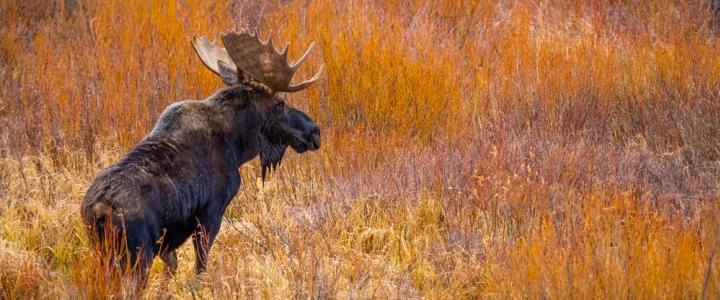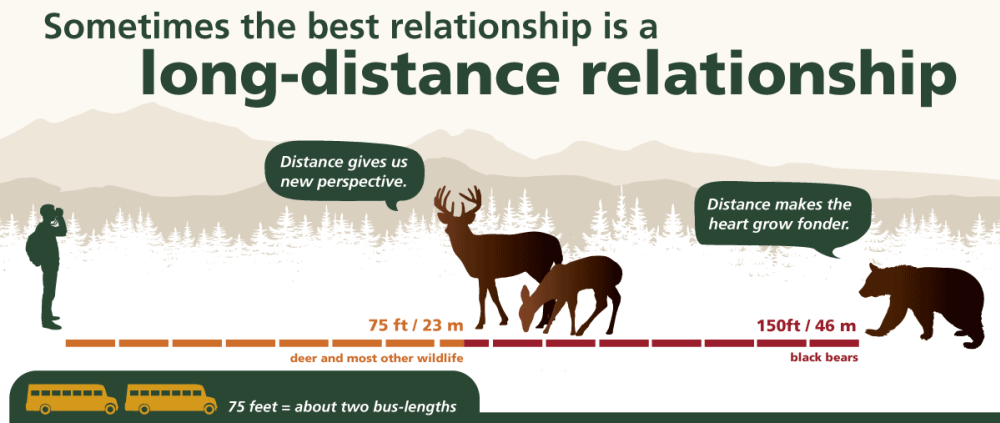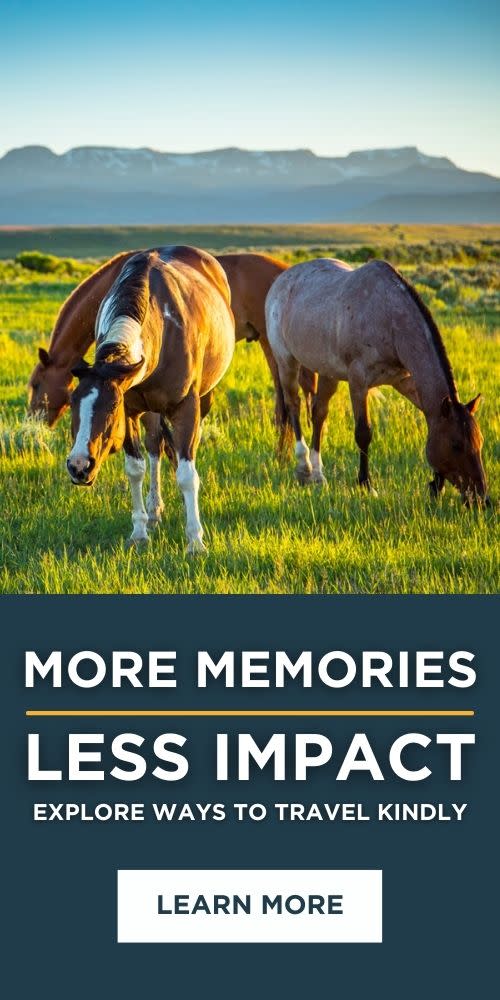
Those of us who live in the Yampa Valley share a home with a large variety of animals big and small. Our mountains, forests, rivers, and lakes provide lush habitats for deer, moose, elk, mountain lions, marmots, pikas, bears, skunks, ermines, raccoons, coyotes, porcupines, beavers, foxes, rabbits, and many varieties of birds and fish. Although many of our larger species, like black bears, are more active in the spring, your chances of seeing wildlife are high throughout the entire year. These encounters can be awe-inspiring experiences that create lasting memories. However, it is important to know ahead of time how to act appropriately around wild animals in the interest of both their safety and your own. Here are some tips for viewing wildlife safely and responsibly during your visit to Steamboat Springs.
WHERE TO OBSERVE WILDLIFE IN STEAMBOAT
In the Yampa Valley, you’re almost just as likely to see a moose hanging out in downtown Steamboat Springs as you are on a hiking trail. However, there are a few places around the area we recommend going to if spying on wildlife is high on your adventure list. Before you go, stop by the Colorado Parks & Wildlife headquarters for more detailed maps and safety information. Park rangers are eager to provide all kinds of valuable information to hunters, anglers, birders, and wildlife lovers.
ROTARY PARK BOARDWALK
Accessible from the Yampa Core Trail, the Rotary Park Boardwalk is a fish and bird habitat that can be accessed for free year-round. Signs posted along the trail offer information about the animals and the environment. All pets must be leashed. Grab a local bird guide at Off the Beaten Path or Ski Haus before you go so you can identify birds local to Yampa Valley, including the Bald Eagle, Osprey, Stellar Jay, Magpie, and more. Marshy areas like this are also a great place to witness moose taking a drink of water or hanging out in the shady willows.
WILDLIFE-FREQUENTED HIKING TRAILS
Some of the valley’s most popular recreational trails are frequently the sites of wildlife sightings. It is possible to see moose, elk, and deer munching on plants alongside any of these trials. Should you encounter a moose, elk, or deer remember to observe the animal calmly and quietly from a safe distance. These animals should be viewed from at least 75+ feet. Moose are very protective of their space and their young and can be aggressive and dangerous to pets and humans if they feel threatened.
CHUCK LEWIS STATE WILDLIFE AREA
Located just south of town off of Hwy 131, Chuck Lewis State Wildlife Area is a habitat for many species, but it is especially known for being a popular destination for sandhill cranes during the spring migration. Bring a pair of binoculars and observe these incredible cranes doing their lavish mating dances. Fishing is also permitted at Chuck Lewis State Wildlife Area.
MORE TIPS FOR INTERACTING RESPONSIBLY WITH WILDLIFE
Whether you seek out wildlife or happen upon it unexpectedly, the following are some good general rules to follow for your protection, and theirs.
Watch Video: Respecting Wildlife
KEEP YOUR DISTANCE
Number one rule of thumb: never approach or try to touch a wild animal.
Just like humans, animals can behave aggressively and unpredictably when they feel threatened and are unlikely to view your approach or photo op as a friendly gesture. Large animals such as moose, bears, and wild cats can easily do tremendous harm to humans they view as a threat.
If you come across an animal you feel is in distress, the best course of action is to keep a distance and call animal control. Well-meaning humans often do far more harm than good when they try to intervene on their own.

WATCH OUT FOR YOUR FOOD AND TRASH
Bears are notorious dumpster divers and backpack thieves. Unattended food and anything that carries the smell of food, like empty wrappers and even toothpaste, is bound to be a magnet for bears and other wildlife. The immediate problem, of course, is the loss of your food, destruction of your property, and most likely a big mess. The problem in the long-term is that animals who become dependent on human food can become dangerous nuisances and end up getting either removed to another location or put down. To feed animals, even inadvertently, is to put their lives at risk. Make sure when you go camping you follow all bear safety protocols. If you are staying at a rental property, do not leave your trash can outside except on trash day, and make sure you always dispose of trash properly.
OBSERVE LEASH LAWS
Always be respectful of rules regarding dog access and leash laws. Keep your dog within sight and do not let it run far off the trail. Remember that just because dogs are animals, that does not mean that they are part of the natural ecosystem. Pet dogs eat processed food rather than a diet of local plants and animals, meaning their waste can be harmful to the environment. Also, dogs that chase or harass wildlife are a tremendous safety risk to all parties involved. Look out for your pup’s best interest by making sure they stick right by your side.
STAY ON DESIGNATED TRAILS
Keep your environmental footprint and chances of dangerous animal encounters to a minimum by staying on designated trails and obeying all signs and closures. Be aware that wildlife activity changes with the seasons and may impact access to certain areas. For instance, there are closures in the winter and spring for sensitive wildlife habitats like deer and elk winter range and elk calving. Click here for more information on seasonal closure in the Routt National Forest.
GIVE ANIMALS THE RIGHT OF WAY
Be alert when you see signs of wildlife crossing while driving. Collisions with wildlife can do great harm not only to the animals but to your vehicle and person as well. To avoid a collision, you should avoid driving over the speed limit in and around the Yampa Valley, being aware that wildlife could very well be hiding in the bushes near the road.






